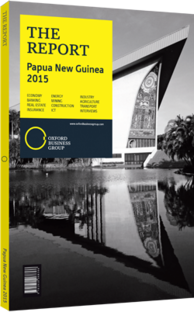Global cocoa price increases motivate growers in PNG
The past decade have seen trying times for cocoa farmers in Papua New Guinea. They have dealt with devastating attacks by the maligned cocoa pod borer (CPB) starting in 2006, followed by a drop in cocoa market prices which have brought the industry to the brink of collapse in recent years. Concerted efforts to revive the crop were led by farmers, international aid organisations and local trade organisations such as the Cocoa and Coconut Institute, and are now beginning to show results, with producers and exporters turning the corner in 2014.
Domestic Production
Domestic cocoa production is forecast to reach 42,000 tonnes for the 2014/15 crop season, up from 40,000 tonnes the previous season. Indeed, this is the largest harvest since the 48,000 tonnes produced in 2010/11, according to data from industry body International Cocoa Association. PNG ranks as the second-largest producer of the crop in the Pacific Oceania region behind Indonesia, which is forecast to produce 380,000 tonnes of cocoa during the 2014/15 harvest, with other countries combining to account for the remaining 42,000 tonnes produced regionally.
The rebound has been crucial not just for local farmers who depend upon the cash crop for their livelihoods, but also for the economy as a whole as cocoa export receipts are the fourth-largest cash earner for agriculture in PNG behind palm oil, tuna and coffee. Cocoa exports peaked in 2010 when the country shipped PGK347.6m ($131.5m) worth of beans worldwide after exporting PGK337.3m ($127.6m) the previous year and besting the former high-water mark of PGK345.6m ($130.8m) in 2008.
Export Quantity
In 2010 this trailed only palm oil exports valued at PGK1.03bn ($389.8m) and coffee exports of PGK521m ($197.1m) in all agricultural exports, excluding seafood. In terms of export quantity, 2008 remains the single-largest year in terms of export volume with 53,300 tonnes of cocoa shipped, followed by 48,200 tonnes the next year.
However, the sector was devastated by a rampant pest infestation of crops decimated by CPB just two short years later. Declining commodity prices further amplified the effects. Foreign sales of cocoa beans were nearly halved from the 2010 peak to PGK182.6m ($69.1m) in 2008 on a harvest of 38,100 tonnes. Numerous revitalisation programmes have since made progress in restoring the industry to its former glory. Domestic cocoa farmers are showing signs of slowly but surely increasing output in recent years as exports inched upward to 38,700 tonnes in 2013.
Commodity Prices
While the increase in output has helped exporters, a revival of global cocoa commodity prices has also given the sector a significant boost. After retaining average monthly prices well above $3000 per tonne through the first half of 2011, prices tanked in the second half of the year and lost around a third of their value by that December when the price bottomed out at $2196 per tonne. Prices continued to flounder under the $3000 level for most of the next two years. However, they have recently begun to rebound after hitting $3042 per tonne in March 2014 and maintained their value through most of the year before tailing off slightly to just under $3000 per tonne by January 2015.
Local growers can command a premium for their exports, with PNG producing a greater proportion of highly regarded cocoa beans than Indonesia, which churns out nearly 10 times the amount of product but sacrifices quantity for quality. Approximately 90% of the cocoa beans produced in PNG for export are classified as “fine or flavour” beans by the ICCO Panel on Fine or Flavour Cocoa compared to only 1% for Indonesian beans, most of which are “bulk” or “ordinary”. Fine or flavour beans, which make up around 40-50% of the total global cocoa market, command a premium price. As a result, they are used by major chocolate manufacturers in Western Europe and to a lesser extent in Japan, the US and Latin America to produce premium-quality chocolate.
You have reached the limit of premium articles you can view for free.
Choose from the options below to purchase print or digital editions of our Reports. You can also purchase a website subscription giving you unlimited access to all of our Reports online for 12 months.
If you have already purchased this Report or have a website subscription, please login to continue.

